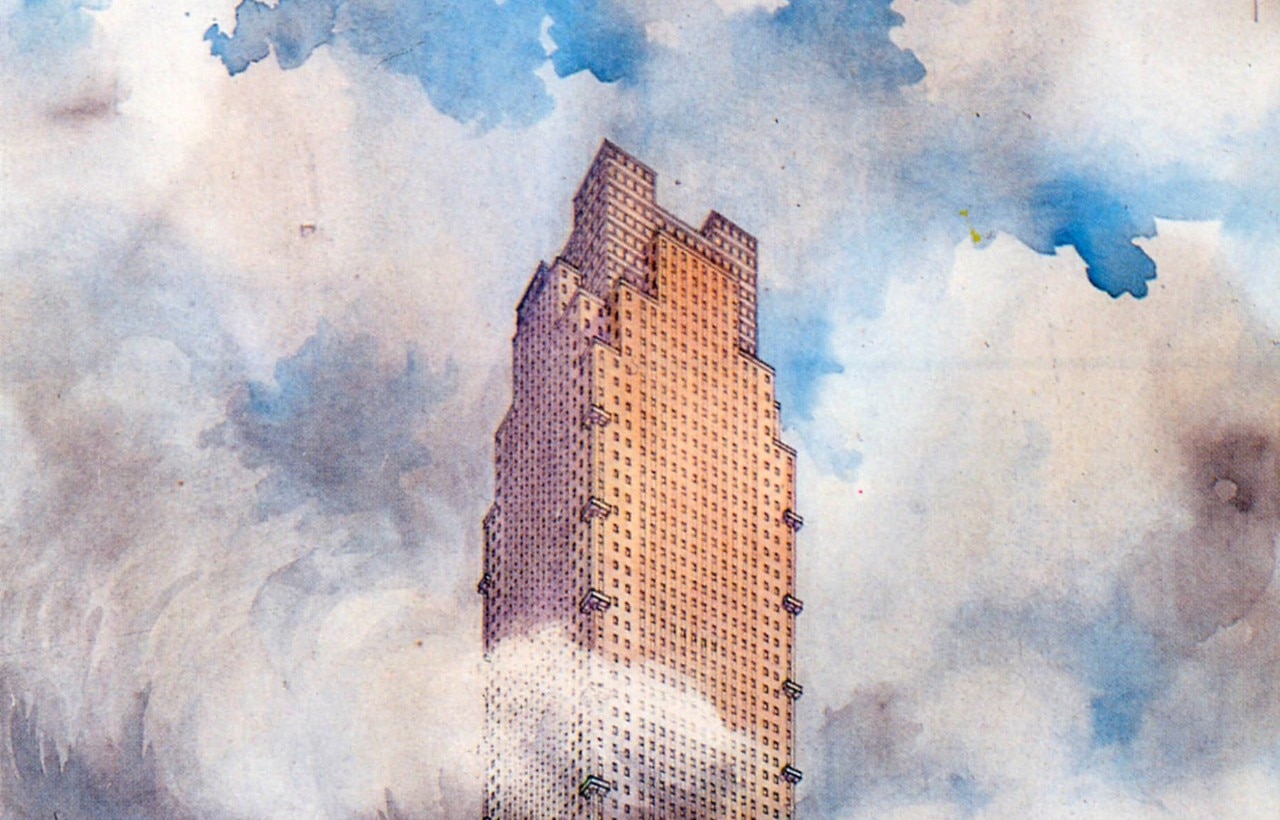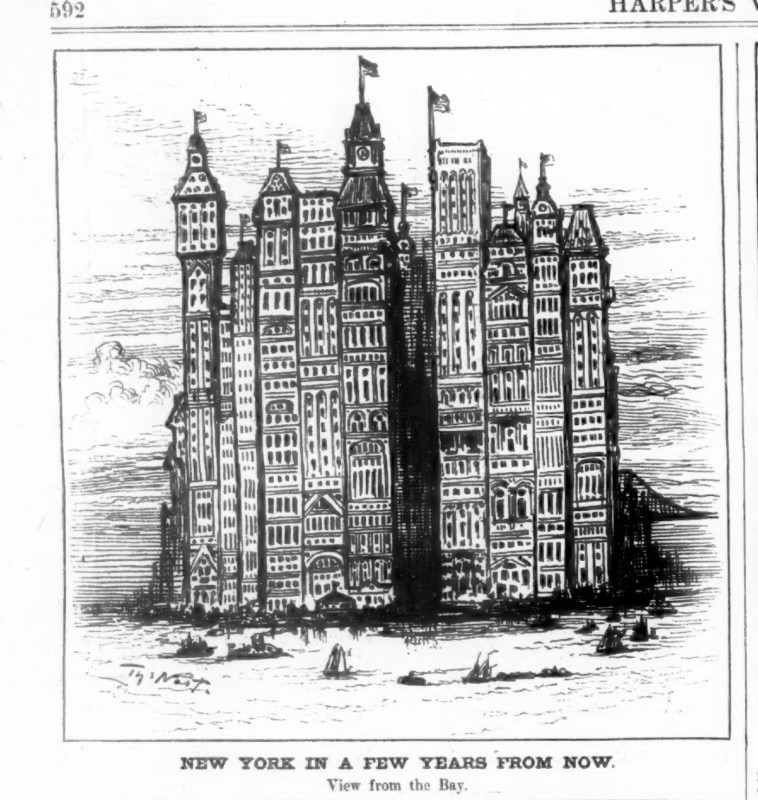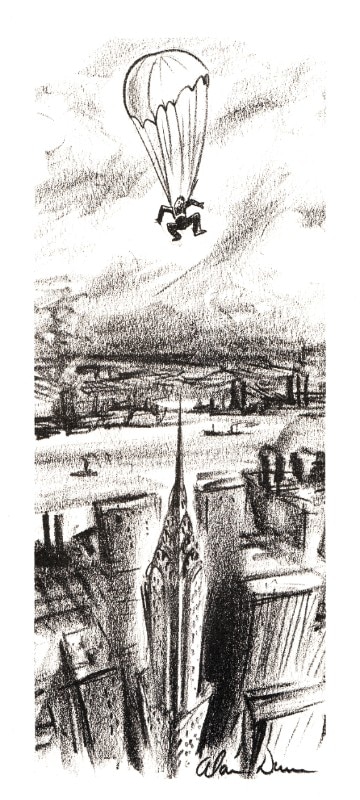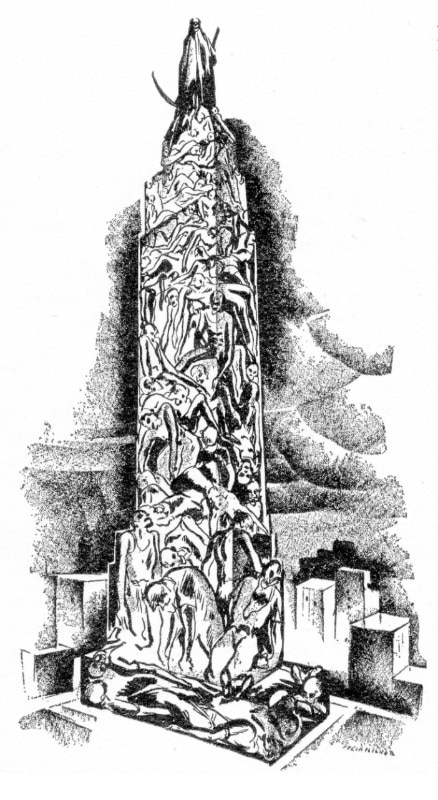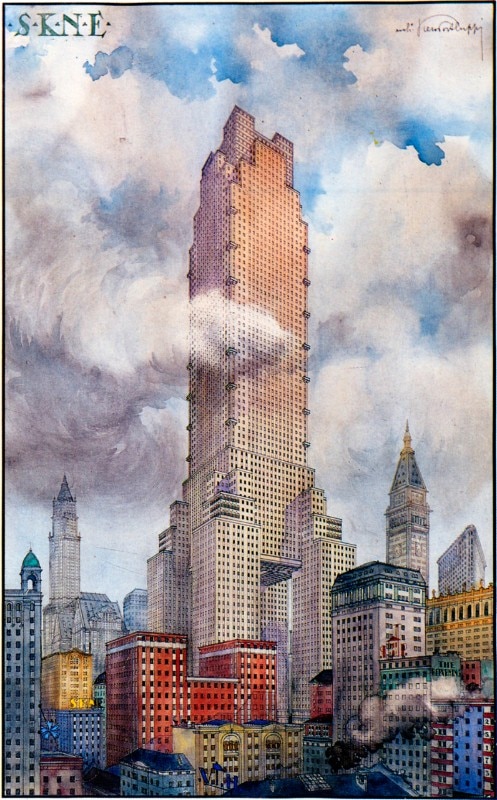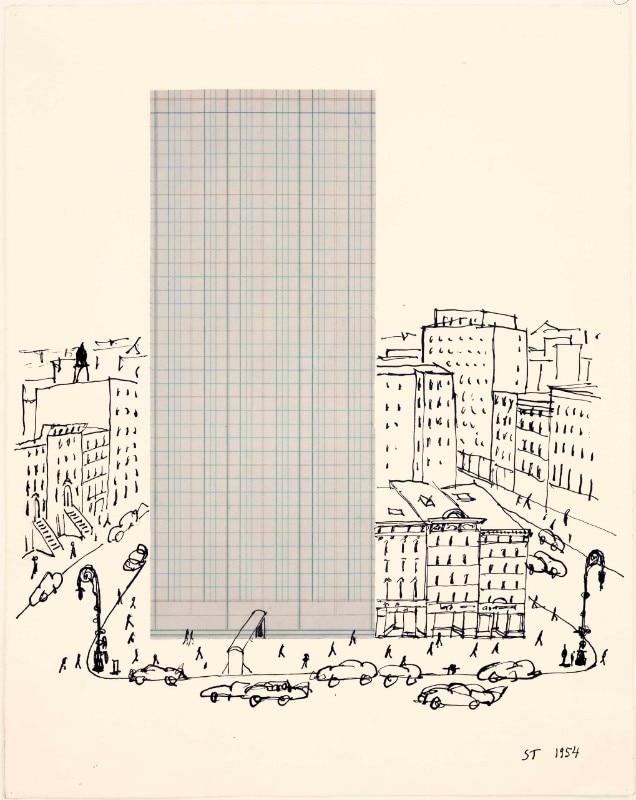This article was originally published on Domus 1076, February 2023.
Skyscrapers have drawn criticism ever since their beginnings. As if doing penance for a biblical sin (see the Tower of Babel), architecture’s race towards the sky has attracted as much disdain as amazement, for technical, urbanistic, aesthetic and social misgivings. In 1903, Montgomery Schuyler wrote: “Like Frankenstein, we stand appalled before the monster of our own creation... These things have transformed New York’s skyline into a sawtoothed monstrosity.”
Graphic satire offers curious insight into the public’s reaction. With their dimensional disproportion, skyscrapers look like the caricature of a building. In 1881, Thomas Nast briefly abandoned political satire to prophetically portray the Downtown of the future as an impenetrable amassing of towers.
In the 1920s, cartoons of this kind proliferated with harmless quips (a parachutist stuck on the Chrysler antenna) but also grimmer reflections. In The New Yorker, Reginald Marsh viewed the city as a dark forest, while the Marxist newspaper The New Masses depicted the Empire State Building as a tomb for the workers who died on-site.
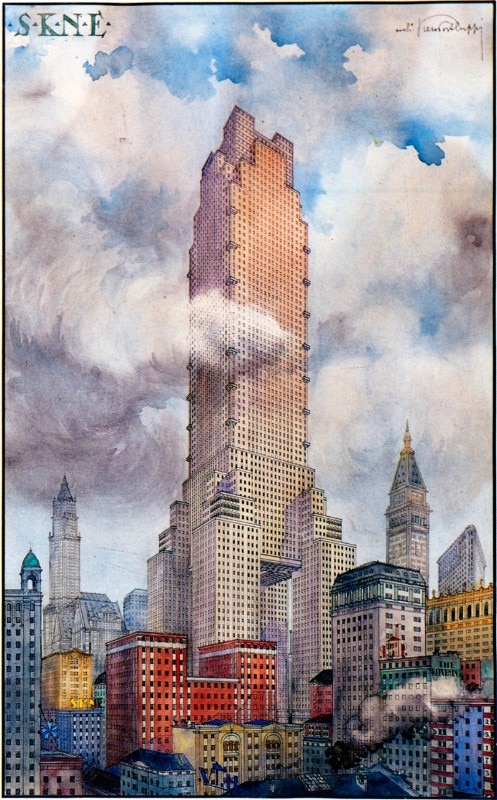
Piero Portaluppi’s design for a colossal skyscraper was a peculiar example. Dream or nightmare? Its name S.K.N.E. revealed the Milanese architect’s doubts (and irony), since the acronym is pronounced skappane (Italian for “Get out of here!”). The International Style ushered in countless skyscraper parodies as repeatable and repetitive abstract boxes, due to an obsession with geometry or easy profit.
Artist Saul Steinberg’s Graph Paper Architecture drawings stood out as the perfect representation of modernist monotony. But the rigour would vanish and caricatures would taunt the fixation of architects (postmodern, deconstructivist and so forth) to impress at all costs.
Like Frankenstein, we stand appalled before the monster of our own creation
The sharpest sneers were reserved for Milan: from symbols of modernity, the towers of Isozaki, Hadid and Libeskind were likened to three rickety old men. For the most hunched-over one, the then prime minister Silvio Berlusconi suggested Viagra. Lastly, the Twin Towers. Despised when they were built (1973), they were mocked in countless cartoons before 9/11 turned them into sacred icons. The tragedy triggered a fierce debate on the role of satire (reignited in 2015 after the Charlie Hebdo shooting). After a period of mourning, many chose to laugh again, using dark humour as catharsis.
Oddly, there are still few caricatures on the recent pencil towers. Yet their exaggerated thinness has already aroused concerns worthy of J.G. Ballard (High-Rise, 1975): stuck elevators, deafening noise and short circuits by structural oversights.


